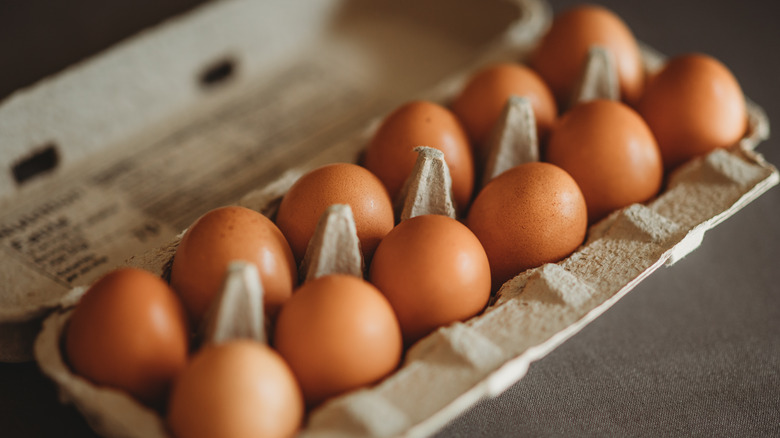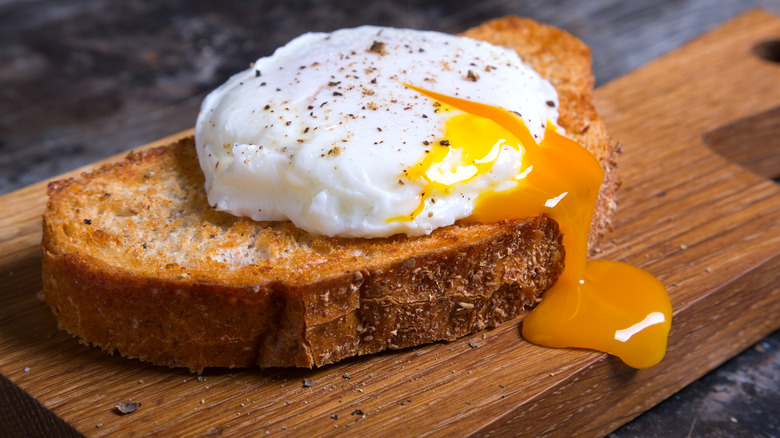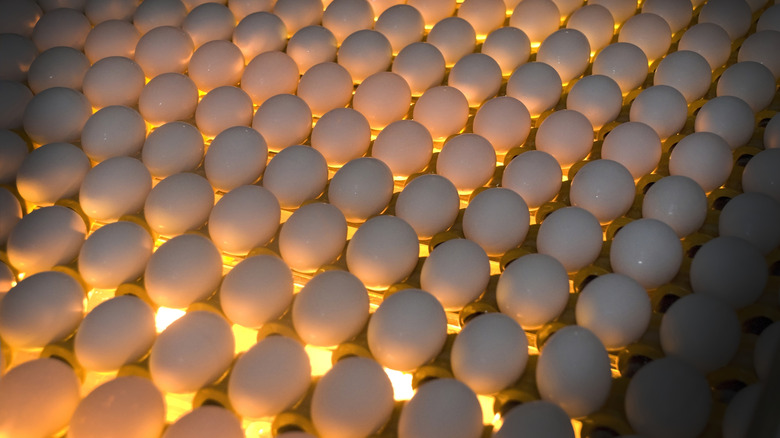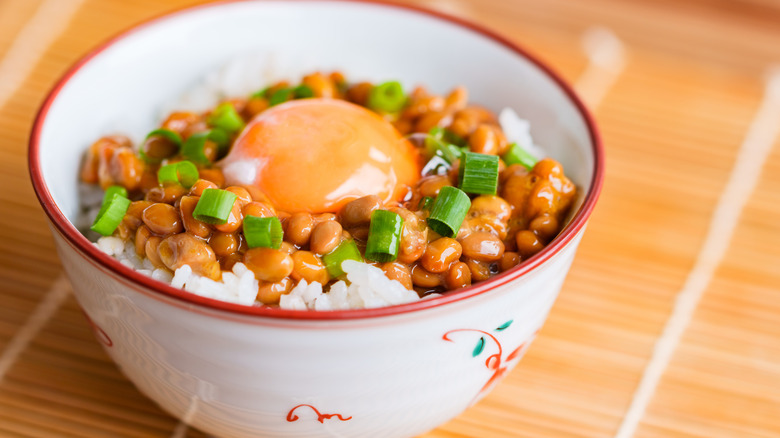The Real Reason Raw Eggs Are Generally Safe To Eat In Japan
You've probably heard that consuming raw or undercooked eggs poses a potentially serious danger to your health. That's because some eggs contain salmonella, and the only way to avoid its negative effects is to thoroughly cook the egg. A salmonella infection is a bacterial infection that can wreak havoc on the body. According to Mayo Clinic, it can cause diarrhea, fever, and abdominal cramps within 72 hours of consuming it. While most healthy people will make a recovery within a few days, others aren't so lucky. Sometimes, the salmonella symptoms can cause dehydration so severe that it leads to hospitalization.
The only way to be sure that no salmonella bacteria enter the body is to thoroughly cook foods to their required internal temperatures. These temperatures will vary depending on the type of food being consumed. However, Japan appears to be one country that can almost guarantee its consumers will not catch salmonella from eating raw eggs. It turns out that they have developed a high-tech way of neutralizing salmonella bacteria before it gets to the consumer.
Japan reportedly has a process to clean and check eggs
Those living in or visiting Japan might be able to breathe a sigh of relief if they typically consume raw or undercooked eggs. According to Kids Web Japan, Japan has a process to help curb the potential of putting any salmonella-ridden eggs on store shelves. Dubbed Japan's "super egg machine," the device actually has the ability to check inside of the egg to ensure that bloodspots are not present, using spectroscopic analysis. The machine also cleans the eggs without breaking their shells, dries them, and packages them so they are safe for human consumption.
Reddit users started a thread about Japan's ability to provide clean eggs to consumers, though some caution that the process isn't foolproof. "A lot of people eat raw or undercooked eggs daily, so the safety of eating raw eggs is very important," one Reddit user wrote. "There are still cases of salmonella every year though." While it might not be impossible to get salmonella from eggs in Japan, it would seem that this "super egg machine" certainly helps mitigate the risk.
Here's how the super egg machine works
So what, exactly, does the super egg machine do to ensure that raw eggs are safe and salmonella-free? The first step is to wash the eggs, as unclean eggs may well be tainted with bacteria-laden chicken poop or dirt from the coop. After the eggs are washed, they're then blow-dried and made ready for the next test: running a gauntlet of hammers. Very tiny ones, of course, providing only the gentlest of taps. An uncracked eggshell, you see, gives off a clear, sharp noise when softly smacked, whereas one with defects may make a more muffled sort of sound.
After yet another spot-check to make sure the eggs' surfaces are now contamination-free, the next step is to peer inside the egg. The low-tech version, called candling, is usually done with a special flashlight instead of a candle and is something used by people raising chickens see if there's a baby chicken growing inside a shell. The super egg machine, however, is also capable of determining if there are any blood spots on the egg using spectroscopy. While a minute amount of blood does not mean an egg is infected, no bloody eggs make the grade to be sold as people food in Japan.
When the egg inspection is over, the ones that pass are sorted by size and weight, packed up, and shipped out to stores. Once they are there, people may purchase and prepare them cooked or raw as they please.
Several Japanese dishes traditionally call for raw eggs
While Rocky Balboa may have been taking his life (or at least his health) into his meat-punching mitts by downing a raw egg for breakfast, Japanese cooks run no such risks, which is a good thing as raw eggs feature in quite a few Japanese dishes. One popular morning meal is tamago gohan, which simply means egg rice. The dish itself is almost as simple as the name since it just consists of a bowl of steamed rice, maybe some seasonings, plus a raw egg.
Another way to eat raw eggs in Japan is something that may not have universal appeal: They're often eaten with nattō, which is something Adam Richman describes as the worst food he's ever eaten. Even in Japan, the fermented soybean dish is unpopular with a fair amount of the population – approximately 40%, according to one recent survey. While the texture of the beans alone is described as slimy, the addition of a raw egg, while traditional, may not do much to remedy the issue. Still, according to Japan's Sora News 24, nattō "keeps the death away," although it probably helps that this breakfast superfood is accompanied by such a highly-sanitized egg.
Should you still become ill after eating this concoction, however, there's yet another way you can put such an egg to good use: A raw egg mixed with warm sake and honey or sugar is a Japanese folk remedy for the common cold.



